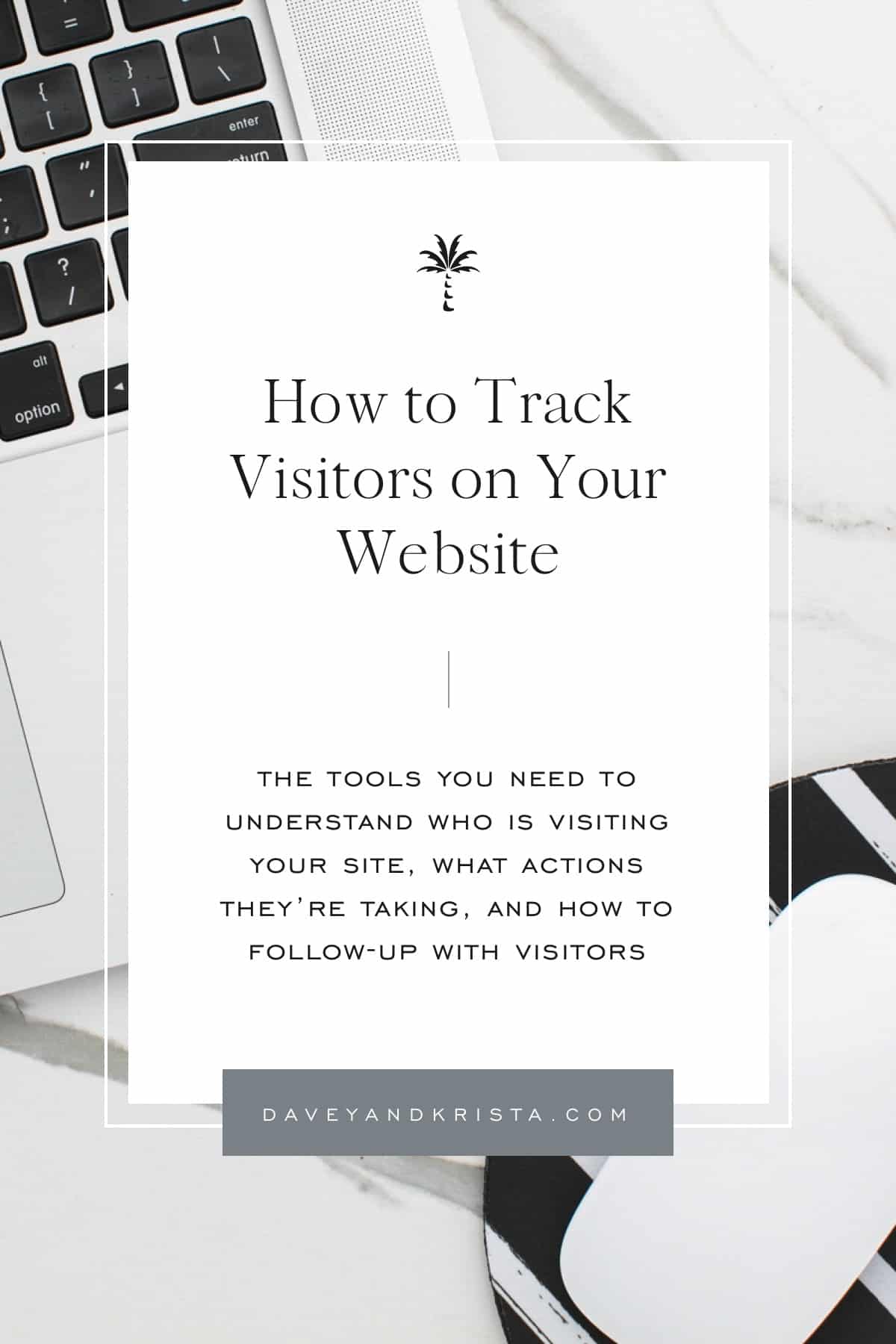Here’s how to install tracking tools on your website so you can take steps to understand who is visiting their website, what actions they’re taking, and follow-up with those visitors in the future.
Think about a few recent shopping experiences at physical stores.
Maybe you were shopping for clothes at JCrew and were asked for your email address at checkout.
Or you might have been at a grocery store where you swipe a loyalty card to receive special discounts.
These businesses—using relatively simple strategies—are able to collect a ton of data on you and your purchasing behavior. They’re then able to use that data to track your behavior so they can market and sell to you in the future.
We frequently see online business owners, however, launch websites without taking any measures to understand who is visiting their website, what actions they’re taking, and implementing a way to follow-up with those visitors in the future.
And I’d argue that it’s easier to do these things on a website than it is in a physical store. So there’s really no excuse for setting up some basic tracking on a website.
Why We Should Track Visitors on Our Websites
There are at least three reasons one should consider tracking visitors on their website.
It gives you greater insight into your audience. Understanding who is visiting your website, where they’re from, how they found your website and other demographic information can help you better market your business and serve your clients.
It can keep our products or services top of mind. People have short attention spans and lots going on. And the truth is that even if someone likes your work, they might not remember how to find your website.
We’re able to serve more relevant offers. If you offer multiple products or services, wouldn’t it be great to follow-up with more information specifically about the product or service a visitor is interested in? That can be done more effectively when actions on a website are tracked.
5 Ways to Track Visitors on your Website
It’s relatively easy to set-up tracking on a website. Remember, you don’t need a complicated set-up in order to start gathering useful data.
We generally recommend people set-up the following five tools—even if they don’t have immediate plans on taking advantage of the data collected. This way they’ll have access to some historical data when they’re ready to get started.
1. The Meta (Facebook and Instagram) Pixel (and other pixels)
Imagine this: Someone visits your website, adds a product to their cart, but doesn’t checkout. Maybe they got distracted or started having second thoughts about purchasing.
Five minutes later they see an ad for the product they ‘abandoned’ that reengages them and ultimately leads them to complete their purchase.
This is something that can be done using the Facebook pixel.
The Facebook pixel can be used to track all sorts of actions on a website like page visits, downloads, buttons clicks, add-to-carts, purchases, and more.
The data the pixel collects can be very valuable in your marketing efforts because it’ll give you the opportunity to…
- remarket to people who’ve expressed an interest in your products or services (as in the example above).
- share targeted offers to specific segments of people who take certain actions on your website or visit specific pages.
- create massive Facebook Lookalike Audiences that consist of people who share similar characteristics to those who interact with your business (and thus might be more likely to purchase from you).
And this only scratches the surface on what can be done using the data collected by the Facebook Pixel.
Note: Facebook and Instagram ads are run from the same ads management platform (Meta). Other social media platforms also have pixels that can be installed on your website.
2. Google Analytics
Even if you’re not going to do any paid advertising with Google, you ought to set-up Google Analytics on your website.
Google Analytics is a tool that will give you insight into information like the number of visitors to your website, the average length visitors stay on your website, bounce rate, referral channels, and some demographic information.
We highly recommend to our clients that they become familiar with Google Analytics because even a basic understanding will help one make more educated decisions in their business.
Instead of relying on ‘feelings’ about website traffic, how many people are (or are not) completing the contact form, or purchasing a product in specific funnels, you’ll be able to turn to the facts. This can be really helpful in identifying seasonal trends and places where you might be able to improve.
3. Google Search Console
Google Search Console will give you insight into how your website performs in Google Search. Interested to see what searches your website appears in or whether Google is having any issues indexing your website?
Google Search Console is the place to go.
Much of what I said about Google Analytics is also true about Google Search Console. Instead of ‘feeling like you never show up in Google,’ you’ll be able to turn to the Search Console to see if that’s true.
4. Heatmaps
Heatmaps allow website owners to see what actions visitors take on a website. Basically, they give you a live recording of what happens on your website and then aggregate that data so that you’re able to easily see patterns.
You are usually able to see…
- Where visitors click on a page.
- How far visitors scroll down tracked pages.
- And mouse movements, among other things.
Heatmaps can help you troubleshoot problems on your website.
5. Live Chat
This might be a surprise for many, but full-featured live chat tools often collect a ton of information on users, especially if they interact with the chat.
Oftentimes, you will be able to see things like:
- Which page a user is on.
- Which pages a user has visited.
- Past conversations.
- Items in the shopping cart.
Some live chat tools even offer heatmap-like features.
Remember to Follow Best Practices (and the Law)
As with most things, there is a right way and a wrong way to do this.
It’s best practice to tell people what data you’re collecting and how you’re using that data via something like a Privacy Policy on your website. And depending on where you live, there might be laws around how you track people on your website.
Serving Clients and Customers More Effectively (and Efficiently)
Tracking users on the web has gotten a lot of bad press lately (and rightly so in many instances), but when done correctly, it’s simply the online version of what many offline businesses already do through reward programs, loyalty cards, and collecting email addresses.
Adding tracking functionality to your website can help you determine what content, products, or services resonate with your audience so that you can serve your audience with even more of what they’re interested in.
This way you can stop guessing what’s happening on your website, and stop shouting about your products and services hoping to catch the attention of people who are interested.
These five tools will help you serve specific, relevant content to people who are interested in what you have to offer.


VIEW THE COMMENTS
Add A Comment